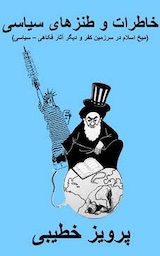Cartoon by Steve Sack
‘More Guns, Less Crime’ Is Wishful Thinking
By Editorial Board
Bloomberg: The evidence is compelling.
In the most thorough study yet published on the effects of concealed carry laws, a team led by Stanford University law professor John Donohue found that state laws making it easy to carry concealed firearms lead to more violent crime. The Stanford analysis follows a stream of previous studies reaching similar conclusions about so-called right-to-carry (RTC) laws. It’s the most definitive refutation of the “more guns, less crime” thesis promoted by the gun lobby — which, not surprisingly, remains hostile to peer-reviewed research on the causes of gun violence.
Using different statistical approaches, and operating with the most complete data yet compiled, the researchers tested the effects of right-to-carry firearm laws in 33 states that adopted them between 1981 and 2007 — tracking violent crime before and after, and controlling for other factors. The exact conclusions varied depending on the statistical method. The bottom line did not. No matter which model was used, the study found that in states that adopted RTC, “violent crime is substantially higher after 10 years than would have been the case had the RTC law not been adopted.”
And the impact isn’t trivial. RTC laws increased violent crime by between 13 percent and 15 percent 10 years after adoption. “There is not even the slightest hint in the data from any econometrically sound regression that RTC laws reduce violent crime,” the study concluded. States that adopted RTC “not only experienced higher rates of violent crime but they also had larger increases in incarceration and police than other states,” the study noted, meaning that RTC states generated higher levels of violent crime even as they increased investments to prevent and punish it.
“More guns, less crime” has always been a shaky proposition. Defensive gun uses against criminals are rare. Because aggressors are opportunistic, and retain the element of surprise, even trained professionals, including police officers, may have limited ability to repel an armed assault. At the same time, so-called good guys with guns regularly supply criminals with weapons. “The most frequent occurrence each year involving crime and a good guy with a gun is not self‐defense but rather the theft of the good guy’s gun, which occurs hundreds of thousands of times each year,” the new study points out. “Lost, forgotten, and misplaced guns are another dangerous byproduct of RTC laws.”
The proliferation of firearms also encourages criminals to arm themselves in public. In a survey of prisoners incarcerated for gun offenses, two-thirds reported that the likelihood of encountering an armed victim played a somewhat or very important role in their choice to use a gun.
The Stanford study is not the final word on gun violence or even on RTC. More studies are needed to understand the complex and cascading effects of firearm policies on real-world outcomes. But the highest-quality research now points to a clear conclusion that should surprise no one: Allowing citizens to carry concealed, loaded weapons with little regard for qualifications, security needs or training makes Americans less safe.










Comments